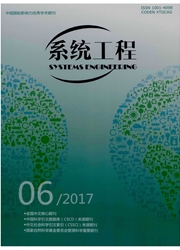

 中文摘要:
中文摘要:
采用门限随机波动率(THSV)模型,从实证的角度分析中国股票市场对利好消息和利空消息的非对称反应。为了估计THSV模型的参数,提出基于有效重要性抽样(EIS)技巧的极大似然(ML)估计方法。采用上证综合指数和深证成份指数的日收益数据为样本进行的实证研究表明,利好消息和利空消息对中国股票市场的影响具有非对称性。具体而言,与利好消息相比,同等程度的利空消息引起中国股票市场更高的波动率以及波动率持续性,这说明中国股票市场对利空消息的反应程度要大于对利好消息的反应程度。
 英文摘要:
英文摘要:
This paper employs the threshold stochastic volatility(THSV)model to investigate empirically the asymmetric responses of Chinese stock market to good and bad news.In order to estimate the parameters of the THSV model,the maximum likelihood(ML)method is proposed based on the efficient importance sampling(EIS)technique.We apply the THSV model to the daily returns of Shanghai Stock Exchange(SSE)composite index and Shenzhen Stock Exchange(SZSE)component index of China.Strong evidence of asymmetries is discovered in Chinese stock market.Specifically,the volatility is found to be higher and more persistent when bad news impacts the market than when good news of the same magnitude does.This leads support to the belief that bad news has a larger impact on Chinese stock market than good news of the same magnitude.
 同期刊论文项目
同期刊论文项目
 同项目期刊论文
同项目期刊论文
 期刊信息
期刊信息
